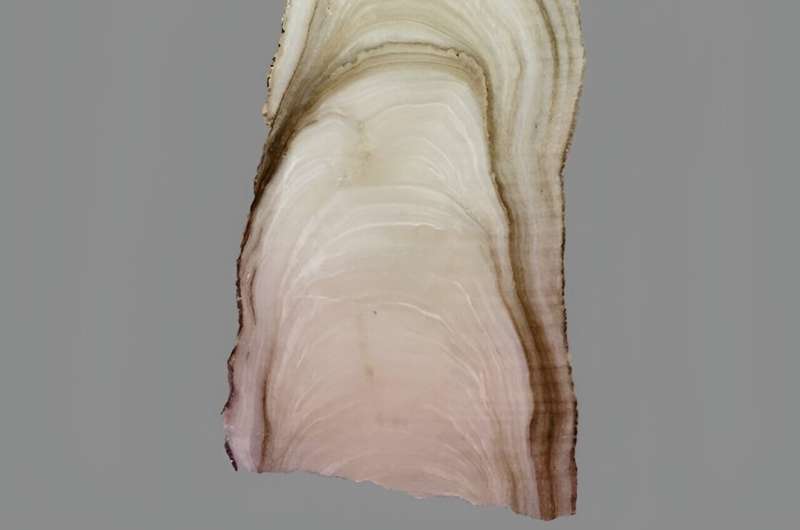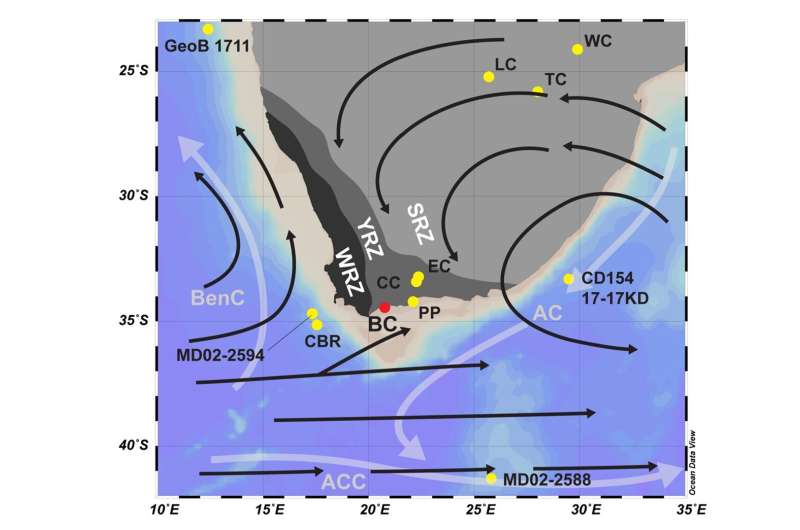This article has been reviewed according to Science X's editorial process and policies. Editors have highlighted the following attributes while ensuring the content's credibility:
fact-checked
peer-reviewed publication
trusted source
proofread
Decoding past climates through dripstones

A recent study demonstrates how dripstones can be crucial for reconstructing past climates. The new approach can provide a detailed picture of the climate around early human occupations in South Africa.
"Dripstones, or speleothems, are unique natural archives—like Earth's USB sticks. They store a wealth of information on past climate which helps us to better understand the environment in which early humans lived," Jenny Maccali explains. She is a scientist at SapienCE Centre of Excellence and led the study, now published in Climate of the Past.
South Africa has a highly dynamic climate resulting from its position at the convergence of two oceanic basins, the Atlantic Ocean to the west and the Indian Ocean to the east. The region is also located at the boundary of different climate zones (subtropical vs. temperate), and the proximity of the Antarctic ice sheet has a direct impact on its climate by influencing the easterly and westerly wind position and, hence, rainfall pattern.
"All these factors mean that climate in the past could have been different from today and also possibly highly variable," Jenny Maccali says.
She says that it is particularly important given that the region hosts key archaeological sites with records of significant cognitive, technological, and social developments, and it is important to understand the climatic conditions under which these occurred.

Archives for climate reconstruction
The recent study, "Multi-proxy speleothem-based reconstruction of mid-MIS 3 climates in South Africa," undertaken by a team of scientists from SapienCE, used new techniques to reconstruct past climate and its variability.
Maccali and her team of researchers have focused on the subterranean world of caves, where they explore dripstones, also known as speleothems, to study past climate. The study is based on scientific analyses of speleothems from Bloukrantz Cave.
"Dripstones forming in caves are excellent archives for climate reconstructions because their age can be accurately determined and a suite of methods can be used to reconstruct different aspects of past climate," Maccali says.
Insights to early human occupations
One of the dripstones from Bloukrantz cave, located on the southern coast of South Africa, provided the team with new climate data for a time window of 3000 years during the last glacial period—from around 45,000 years ago.
They used different methods that confirmed the average air temperature for this period of 18.8 ± 0.5 ◦C, which was slightly warmer compared to the present day, possibly because the sea level was lower, and the site was further away from the coastline than today. In addition, we could show, again based on multiple methods, that rainfall was highly variable with repeated drying events.
"Combining these insights, our study was able to increase confidence in the methods that were being used and further work will likely provide a detailed picture of the climate around the early human occupations during a crucial time period in South Africa," Maccali says.
More information: Jenny Maccali et al, Multi-proxy speleothem-based reconstruction of mid-MIS 3 climate in South Africa, Climate of the Past (2023). DOI: 10.5194/cp-19-1847-2023
Journal information: Climate of the Past
Provided by University of Bergen




















